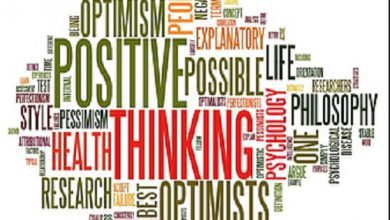DISC methodology with profile test and application
What is DISC methodology?
The DISC methodology is used by HR managers to define the main characteristics of their employees, in order to improve team management.
In a business environment, we know that technical capabilities are needed. However, having a technically qualified employee, but who does not feel motivated and engaged, will not bring satisfactory results for you or for the company. It is at this point that it is worth implementing the DISC methodology.
This methodology allows us to know the employee’s behavioral profile , the challenges that motivate them and what their attitudes are in the most diverse situations in the professional environment or even outside it.
Even having emerged in the 1920s, the DISC methodology is very current and has been widely used in companies by managers, leaders and HR professionals.
Through the profile test, these professionals achieve greater assertiveness, both when hiring the ideal person for a particular position and when delegating tasks or reallocating positions.
But do you know the DISC method , what is it for and how to apply it in your company? Continue reading and find out more!
It is a behavior assessment method whose main objective is to map the dominant profiles of an individual, according to the environment.
The DISC methodology detects characteristics, such as strengths, motivations, way of managing and communicating, among many other attributions to provide people with a deep self-knowledge.
Created from the studies of psychologist William Moulton Marston, who in his book published in 1928, The Emotions of Normal People, developed the concepts that serve as the basis for DISC.
At that time, behavioral profiles were only used in people with some mental disability. Given this scenario, Marston idealized extending this concept to assess the behavior of all individuals.
Even with the publication of the book in the 1920s, it was only in 1945 that researcher Walter Clarke created an assessment tool for DISC, currently used in several countries, by various organizations and companies.
What is DISC profile?
As a way of testing his studies, Marston discovered four basic profiles in individuals: Dominance, Influence, Stability and Conformity — from the English initials of these words, the acronym DISC emerged.
According to Marston, no one is 100% just a DISC profile, however, people tend to have one or two that are predominant.
Through the test , the manager is able to map and explore each of these profiles in their employees.
But he needs to be aware that the person will not always behave according to his profile, as he is influenced by everyday situations in his personal life and also by events in the business routine.
The DISC profile test
The DISC profile test is the tool that allows the identification of the predominant profile of the individual. It is usually applied in the form of a questionnaire to be answered quickly and unconsciously, so that the identification is assertive.
Based on the model established by Marston, the test sets the result to one of four behavioral representations. See each of them below.
1-dominance
People with this profile tend to be determined and find it easy to deal with challenges. In addition to being demanding, bold and assertive. As professionals, they present an effective work, with immediate results, always focusing on results.
2-Influence
Here we have more emotional people, who tend to be big influencers. In addition, they are lively, enthusiastic, outgoing and motivating. In the professional sphere, they are creative and always seek to exchange ideas with other professionals to keep themselves updated and innovative.
3-Stability
Profile that seeks high standards and, therefore, is not to take risks. Still, they are patient, calm, reliable, persistent and kind people. In the corporate environment, they deal better with routines and standards, as they always want to be efficient and precise in their activities.
4-Conformity
Finally, we have the analytical, cautious, technical and determined people. In the work environment, they follow rules and orders easily and carry out their activities with great care and perfection. Therefore, they charge themselves a lot and tend to be critical of their teammates.
Over the years, with the evolution of the DISC tool, an important change was made in the nomenclature of the profiles, since, according to studies, their literal translation did not clearly convey what was the main characteristic in each of them. Therefore, we currently have the following corresponding to DISC profiles:
- Dominance — Executor;
- Influence — Communicator;
- Steadiness — Planner;
- Conscientiousness — Analyst.
How to apply the DISC methodology in the company?
We know that people are the biggest differentiator within a company. So, getting to know them better through profile analysis, based on the DISC methodology, will help to understand their talents and limitations, in addition to improving communication between leaders and followers.
As a result, the company will have more satisfied and productive employees. This type of conduct is called behavioral management, that is, a strategy for you to be able to direct your team based on data and focusing on results, in addition to identifying possible leaders in the teams.
But to apply behavioral management in your company, the first step is to use the DISC methodology through behavioral analysis software , since, with a good DISC tool , it is possible to:
- mapping the behavior of employees;
- apply organizational climate survey ;
- perform performance evaluation;
- carry out the recruitment and selection process until hiring;
- mapping profiles to positions, putting the right person in the right place;
- register the data of the collaborators, etc.
Ideally, the profile analysis should be done annually. In this way, the HR sector can monitor the behavioral efforts of the professional and measure their evolution.
Also, through the DISC method , you will reduce the turnover rate in your company, as this tool will help guide the selection and hiring of professionals more aligned with the company’s culture, the team and the position they will hold.
This method also strengthens teamwork, as the dynamics of interaction depend on individual profiles grouped by identified interests and motivations.
Finally, always keep in mind that the company that applies the DISC methodology in hiring and in the daily management of its employees, will always be a differential in the market, because a good professional wants to be valued by the organization, especially as a person.




